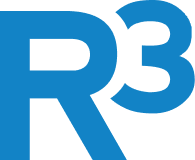In today’s fast-paced digital landscape, organizations are constantly seeking ways to optimize their operations and reduce costs. One area where significant savings can be achieved is through the effective management of cloud resources. Microsoft Azure, a leading cloud services platform, offers various tools and strategies to help organizations right-size their resources, ensuring they are not only cost-effective but also perfectly tailored to meet their needs.
Understanding Rightsizing
Rightsizing in the context of Microsoft Azure involves analyzing and adjusting the computing resources to match the actual demand. This process is critical because it directly impacts both the performance and the cost-efficiency of cloud operations. An over-provisioned system may lead to unnecessary expenses, while under-provisioning could compromise performance and user experience. Thus, rightsizing strikes a balance by allocating just the right number of resources needed for optimal functionality.
Benefits of Rightsizing Azure Resources
The primary benefit of rightsizing Azure resources is cost optimization. By eliminating unnecessary expenditure on over-provisioned resources, organizations can allocate their budget more effectively, investing in areas that drive growth and innovation.
Additionally, rightsizing contributes to enhanced performance and efficiency. Tailoring resources to match the actual demand ensures that applications and services run smoothly, providing a better experience for end-users. It also simplifies management and reduces the complexity of cloud environments, making it easier for IT teams to maintain and scale their infrastructure as needed.
Analyzing Resource Utilization Patterns
The first step in rightsizing Azure resources is to understand the utilization patterns. This involves monitoring the performance metrics of your deployed services and applications over a period. Azure provides tools like Azure Advisor and Azure Monitor that help in identifying underutilized or idle resources based on CPU, memory, and other critical metrics.
By analyzing these patterns, organizations can pinpoint which resources are over-provisioned. For instance, a virtual machine (VM) might be allocated more CPU or memory resources than it actually uses. Identifying such instances enables organizations to make informed decisions about downsizing or reconfiguring these resources to better match their usage patterns.
Optimizing Costs with Downsizing and Reserved Instances
Once the analysis is complete, the next step is to implement changes that align with the observed utilization patterns. Downsizing is a straightforward approach where the capacity of over-provisioned resources is reduced. For example, switching to a smaller VM size can lower costs without affecting performance if the current usage data supports such a move.
Another powerful strategy is to leverage reserved instances. Azure offers significant discounts for VMs when you commit to a one- or three-year term, compared to pay-as-you-go pricing models. This option is ideal for workloads with predictable usage, as it ensures availability while optimizing costs.
Conclusion
Rightsizing resources in Microsoft Azure is a crucial practice for organizations aiming to maximize their cloud investment. By thoroughly analyzing resource utilization patterns and implementing strategic adjustments, organizations can achieve a perfect balance between cost savings and optimal performance. Azure’s comprehensive suite of tools and recommendations assists in this process, guiding organizations toward efficient and effective cloud resource management. In an era where every dollar counts, rightsizing Azure resources is an essential strategy for staying competitive and ensuring sustainable growth.

